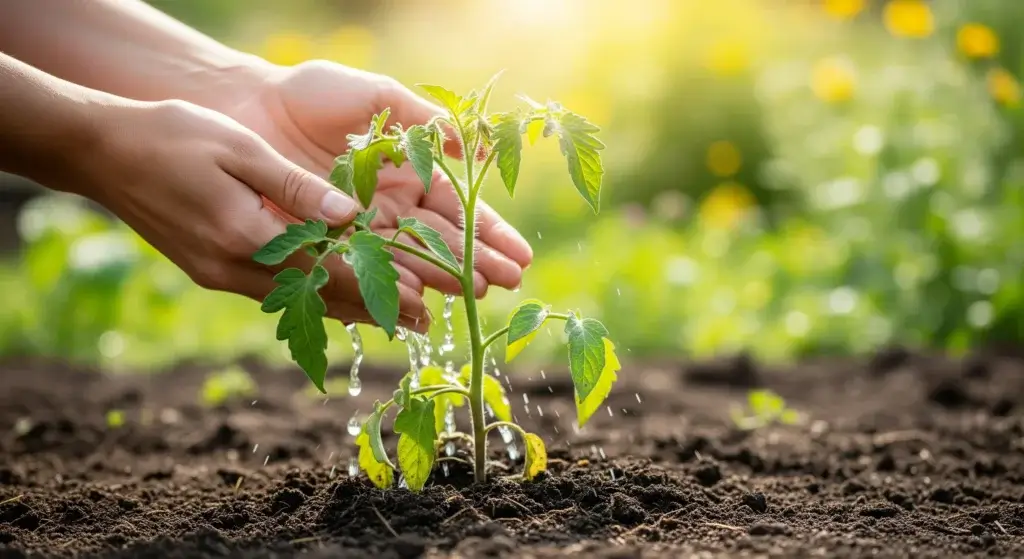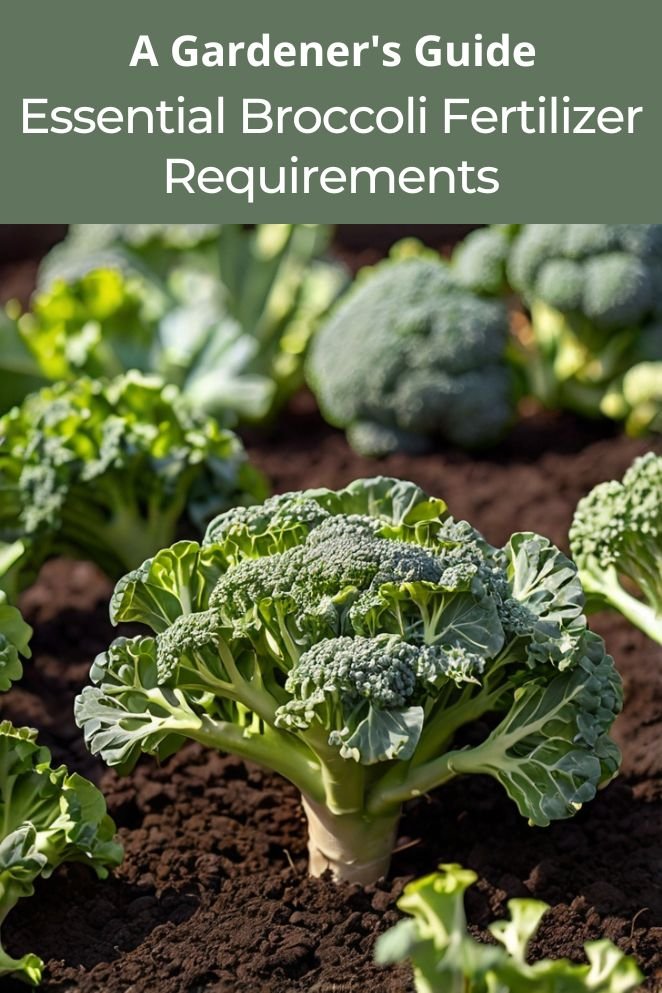
Growing broccoli can be incredibly rewarding, but ensuring a bountiful harvest requires understanding its specific fertilizer needs.
Broccoli is a heavy feeder, meaning it requires more nutrients than some other garden vegetables.
In this guide, we will cover everything you need to know about fertilizing broccoli, from understanding your soil to choosing between organic and synthetic fertilizers, and the specific needs at different growth stages.
Understanding Your Soil
Before you can effectively fertilize your broccoli, it’s crucial to understand your soil’s condition.
Conduct a soil test to determine its pH and nutrient levels.
Broccoli thrives in soil with a pH between 6.0 and 7.0.
The test results will help you identify any nutrient deficiencies and adjust your fertilization plan accordingly.
- Read also: A Comprehensive Guide: Optimizing Spacing for Broccoli Plants
- Read also: Protecting Your Broccoli: Common Broccoli Diseases
Steps to test your soil
- Collect soil samples: Gather soil from several spots in your garden, about 6-8 inches deep.
- Mix samples together: Combine the samples in a clean bucket.
- Send for testing: Send the mixed sample to a local extension service or use a home testing kit.
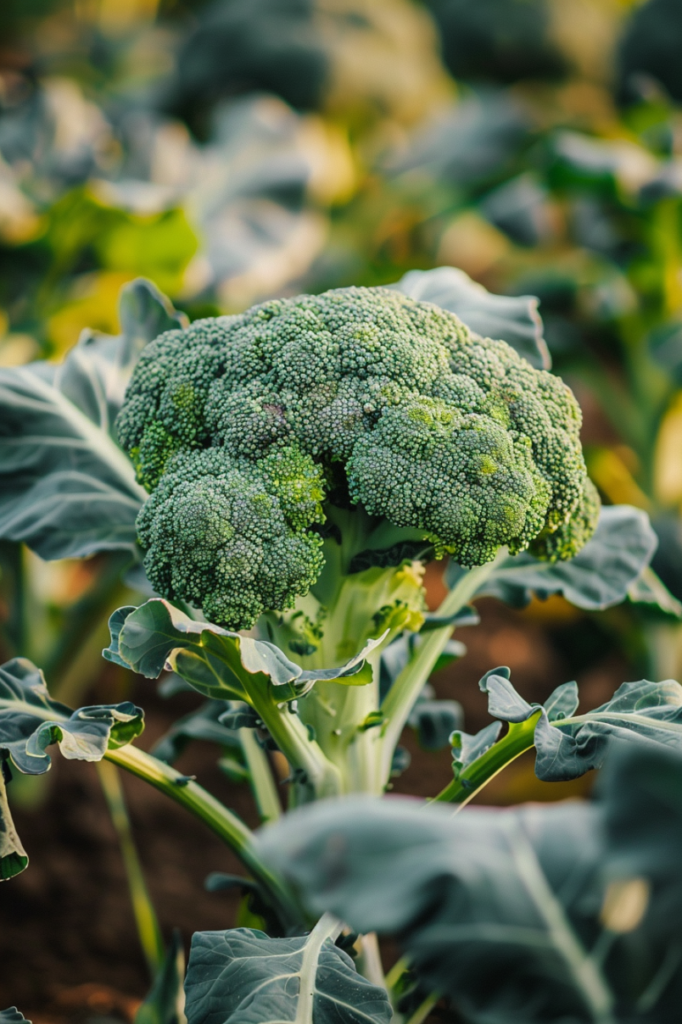
Broccoli Fertilizer Needs by Stage
Broccoli has different fertilizer needs depending on its growth stage.
Here’s a detailed guide on how to provide the right nutrients from seedling to harvest:
Seedling stage (before transplanting)
Young broccoli plants, while still in the seedling stage, need a balanced fertilizer to help them grow strong.
A balanced fertilizer provides equal amounts of nitrogen (N), phosphorus (P), and potassium (K), which are essential for initial growth.
A common choice is a 10-10-10 fertilizer, which has equal parts of these nutrients.
Application
Mix the fertilizer with water according to the instructions on the package.
Water the seedlings with this mixture every 1-2 weeks.
This helps your young plants develop a strong foundation before they are moved to their final garden spot.
Vegetative growth stage (after transplanting)
After transplanting broccoli into the garden, the plants will experience a rapid growth phase where they need more nitrogen.
Nitrogen supports the development of leaves and stems, which are crucial for the plant’s overall health and growth.
Fertilizer choice
Use a high-nitrogen fertilizer such as a 20-10-10 or 16-16-16.
These formulas provide a greater amount of nitrogen to promote robust vegetative growth.
Application
Apply the fertilizer 3 weeks after transplanting.
Continue to fertilize every 3-4 weeks to ensure your plants get the nutrients they need for healthy leaf and stem development.
Head Formation Stage
When your broccoli plants start forming heads, their nutrient needs change.
At this stage, they require more phosphorus and potassium to support the growth and development of healthy, full heads.
Fertilizer choice
Switch to a balanced fertilizer like 10-10-10 or one that has a higher phosphorus and potassium content, such as 5-10-10.
These formulas help the plant focus energy on forming and maturing the heads.
Application
Apply the fertilizer once the heads begin to form.
Follow the recommended application rates on the package to avoid over-fertilizing, which can harm the plants.
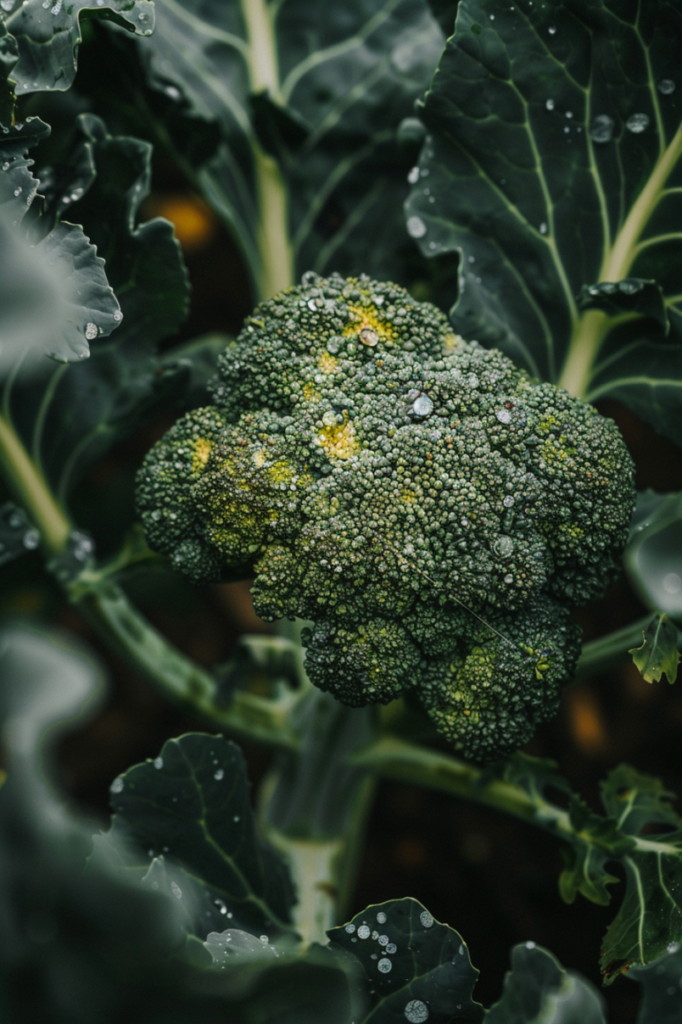
Organic vs. Synthetic Fertilizers for Broccoli
When choosing a fertilizer for your broccoli, you have two main options: organic and synthetic.
Both types have their benefits, and the right choice depends on your gardening goals and needs. Here’s a detailed look at each:
Organic Fertilizers
Organic fertilizers are made from natural materials and work differently from synthetic ones.
They release nutrients gradually over time, which helps to improve soil health in the long run.
Here’s what you need to know about organic options:
- Nutrient release: Organic fertilizers provide a steady supply of nutrients as they break down, which can enhance the overall fertility of the soil.
- Soil improvement: They improve soil structure and promote the activity of beneficial microorganisms in the soil.
Common Types
- Compost: Adds a wide range of nutrients and improves soil texture.
- Aged manure: Enriches soil with nutrients and organic matter.
- Blood meal: High in nitrogen, supports leafy growth.
- Bone meal: Rich in phosphorus, aids in root development and flowering.
Best for
Organic fertilizers are ideal if you want to enhance soil health over time and foster a healthy, balanced ecosystem in your garden.
Synthetic Fertilizers
Synthetic fertilizers are chemically manufactured and are designed to provide nutrients to plants quickly.
They have their own set of advantages:
- Immediate nutrients: They offer a fast release of nutrients, which can quickly correct deficiencies and boost plant growth.
- Concentration: Synthetic fertilizers are more concentrated, meaning you can provide precise amounts of nutrients to your plants.
- Convenience: They are often easier to apply and can be tailored to meet specific nutrient needs.
Best for
Synthetic fertilizers are suitable if you need immediate results or if you want to manage nutrient levels with high precision.
Choosing the right fertilizer
Organic fertilizers
Choose these if you’re focused on long-term soil health and want to build a sustainable garden.
They help create a fertile environment that benefits not just your broccoli but the entire garden ecosystem.
Synthetic fertilizers
Opt for these if you need a quick nutrient boost or if you’re dealing with specific nutrient deficiencies.
They are effective for immediate results and can be adjusted as needed.
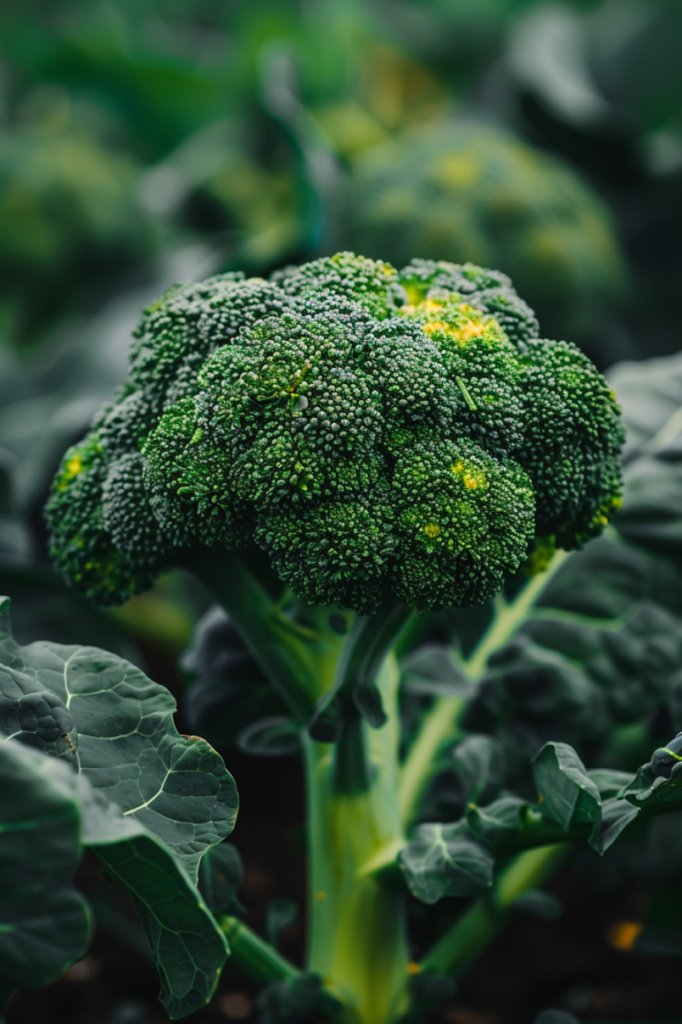
Additional Tips for Fertilizing Broccoli
To get the best results from your fertilization efforts and keep your broccoli plants healthy, consider these additional tips:
Side dressing
When fertilizing, place the fertilizer alongside the broccoli plants rather than directly on them.
This method is called side dressing.
It helps avoid direct contact with the stems and leaves, which can sometimes cause burning or damage.
Spread the fertilizer in a band along the rows of plants, a few inches away from the stems, and gently work it into the topsoil.
Watering
Before applying fertilizer, make sure the soil is moist.
Watering the soil beforehand helps prevent root burn, which can occur if fertilizer is applied to dry soil.
Moist soil helps the fertilizer dissolve properly and makes nutrients more available to the roots.
After applying the fertilizer, give the plants another light watering to help the nutrients get into the soil.
Mulching
Cover the soil around your broccoli plants with organic mulch, such as straw, grass clippings, or leaves.
Mulch helps retain soil moisture, reducing the need for frequent watering.
As the mulch breaks down over time, it releases slow-release nutrients into the soil, which supports continuous plant growth and helps maintain a steady supply of nutrients.
Foliar feeding
Occasionally, you can use foliar feeding, which involves spraying a diluted fertilizer solution directly onto the leaves of your broccoli plants.
This method allows for quick nutrient uptake through the leaves and can be particularly useful if your plants are showing signs of nutrient deficiency.
Make sure to follow the instructions for dilution on the fertilizer package and avoid spraying during the hottest part of the day to prevent leaf burn.
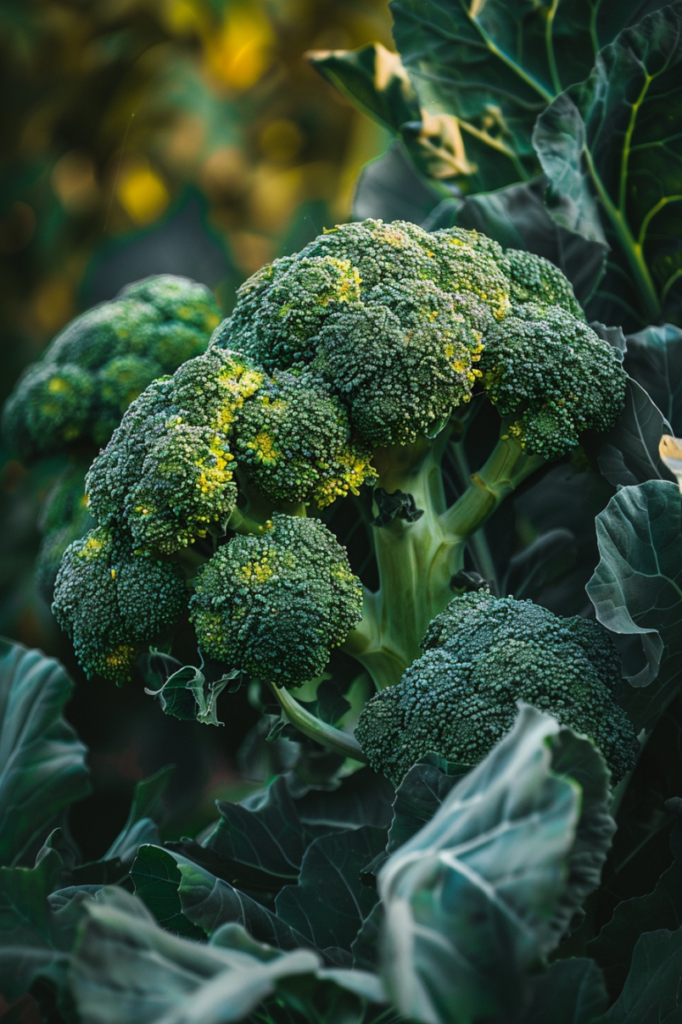
- Read also: Broccoli Care Mistakes: Master the Art of Growing Your Broccoli
- Read also: From Seed to Supper: Mastering Organic Broccoli Care
Conclusion
Proper fertilization is key to growing healthy, productive broccoli plants.
By understanding your soil, applying the right nutrients at the appropriate stages, and choosing between organic and synthetic options, you can ensure your broccoli thrives.
Remember to monitor your plants regularly and adjust your fertilization plan as needed for the best results.



